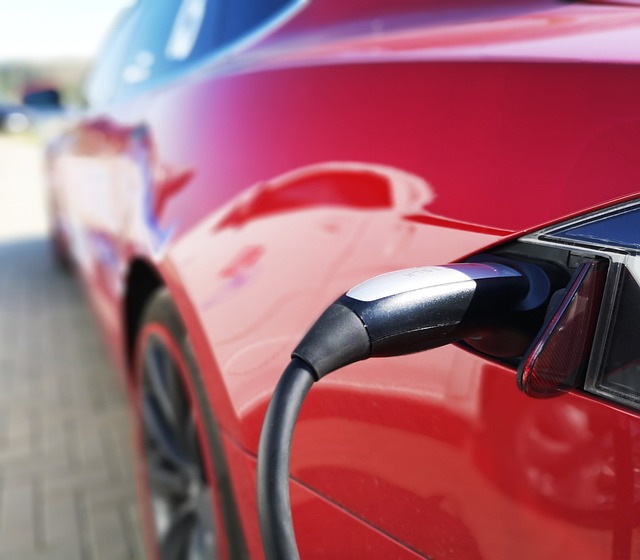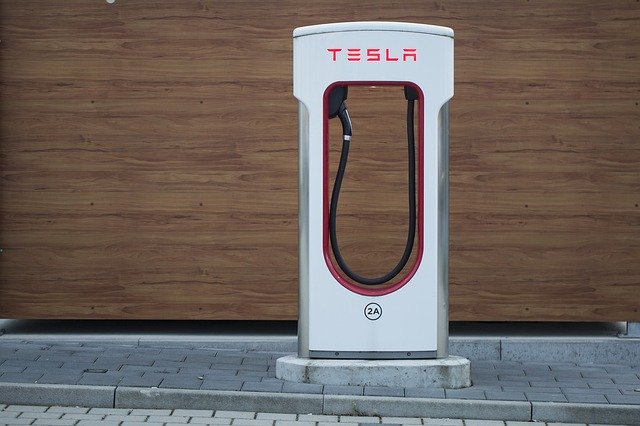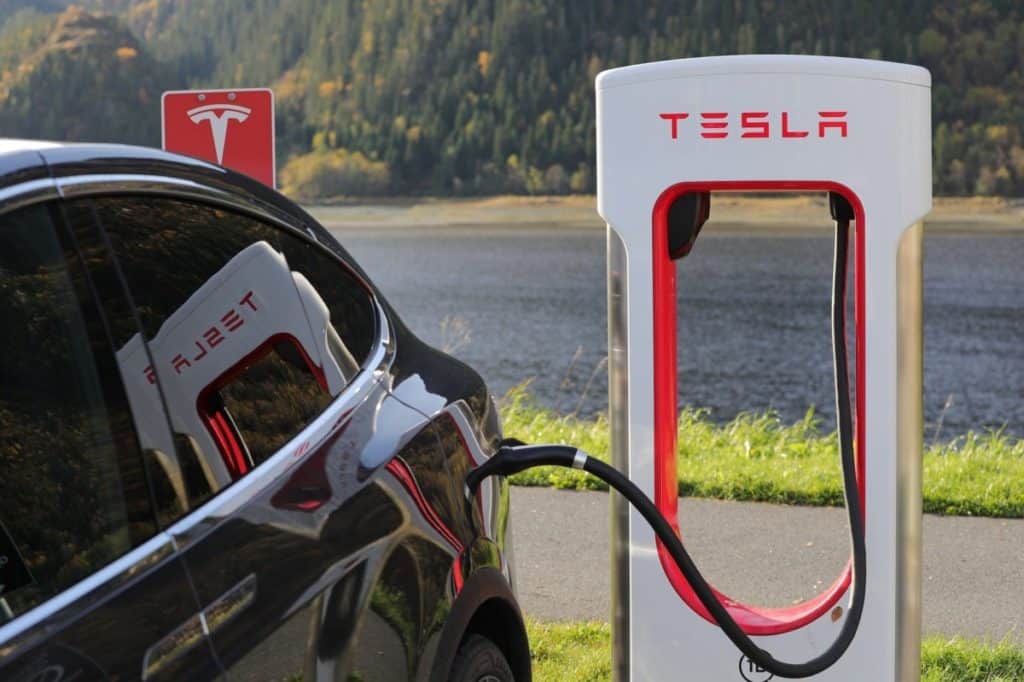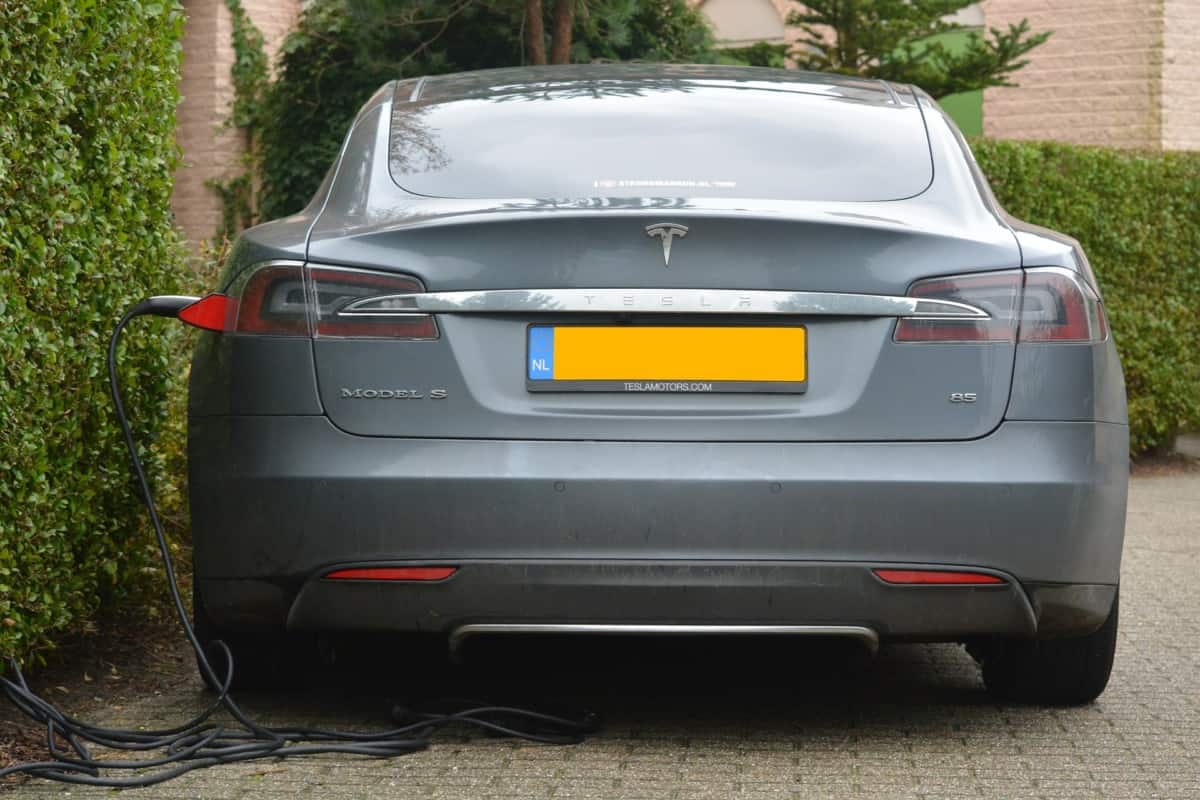Can I Charge a Tesla at Home?
Yes, you can charge a Tesla at home using a home-based wall connector. The wall connector currently used in home stations is considered an upgrade from the basic standard charging cord that all Tesla cars usually come with.
Tesla Charging at Home
Tesla charging at home is by far the most convenient method for most people, simply connect your Tesla car to the Tesla Wall Connector when you arrive back home in the evening and wake up the following morning to a full charge.
You could also use the adapter for a standard 120V outlet which comes with your Tesla for Tesla charging at home.
Watch this short video for TIPS about charging a Tesla at home
How Long Does It Take to Charge a Tesla at Home?
How long does it take to charge the Tesla? Well, generally, it usually takes overnight to fully charge a Tesla at home. However, there are certain factors that determine the charging speed.
One of the most crucial factors is the outlet you are using. If you are going to use this vehicle frequently, then it would be beneficial if you install a charging outlet in your garage first before you bring it home.
You need to consider the installation specifics as recommended by Tesla. For instance, you need to ensure that the electrician uses NEMA 14-50. This is usually a 240 Volt outlet that runs on a 50 AMP circuit breaker.
This type of outlet will effectively charge your Tesla Model 3 at an average rate of around 30 miles per hour. However, if you have other models such as S and X, then the charge rate will be significantly lower.
How long does it take to charge a Tesla?
Take a look at the charge speed based on the miles per hour charge of different Tesla models.
- The Model X- 20 miles per hour
- Model S- 23 miles per hour
- Model 3 – 30 miles per hour
If you want to significantly reduce the charge time, then you can use the Tesla Wall Connector. According to data reports, a Tesla Wall Connector uses a hardwired charger that can effectively increase the charge speeds up to 44 miles per hour based on the available amperage and the vehicle model.
If you are in a hurry or want to significantly reduce the charge time, then this is definitely the best alternative.
How long does it take to fully charge a Tesla?
Charging times for a Tesla can vary significantly based on the model, the state of the battery, and the type of charger being used.
On a standard home charger, it can take anywhere from 6 to 12 hours to fully charge a Tesla. However, using Tesla’s Supercharger network, most models can achieve an 80% charge in about 30 minutes.
It’s important to note that the last 20% of charging takes longer due to battery management protocols. Always refer to the specific model’s manual and the charging equipment for precise charging durations.
How to Charge Tesla at Home?
How to charge Tesla at home is a common question asked. For the best home charging experience, I recommend installing a Wall Connector as mentioned above; this is a hardwired charger capable of speeds up to 44 miles per hour depending on the vehicle model and amperage as shown in the technical details below.
Also, a domestic adapter is included as standard equipment with all new Tesla cars, this 120V is what most of your home appliances use. This provides approximately 6-8 miles of range per hour of charge, depending on the car.
You do not need to deplete the battery before charging as Tesla uses lithium-ion batteries, which means you’re able to plug in as often as required.
How long does it take to charge Tesla, below is a guide to help you.

What Is the Best Home Charging Equipment for Tesla?
There are basically two main connector options that are ideal for charging a Tesla at home. They include:
- Wall connector
As stated above, wall connectors usually increase the charging rates per mile by quite a huge range. Overall, Tesla usually recommends this connector because it’s the most dynamic hardware when it comes to charging Tesla Model 3, X, Y, and S.
The best thing about this hardware is that it’s highly versatile and you can customize it to fit almost any type of power supply.
Just make sure that you install it with a circuit breaker that also matches the car’s charger capabilities. The main features of Wall Connector include:
- Tempered white glass faceplate
- Up to 77 km/ 44 miles of charge range per hour
- It’s versatile and compatible with models S, X, Y, and 3
- It comes with a 2.4 GHz 802.11 b/g/n Wi-Fi connectivity
- The connector comes with customizable power levels on its range of circuit breakers
- It normally offers up to 11.5 Kilo-Watt / 48-ampere output
- It’s compatible with any electrical system at home
- Mobile Connector
The Mobile Connector
This is the second charge option and it’s currently included with all the new vehicles because it’s considered a standard tool.
The mobile connector hardware is compatible with all the standard electrical outlets and it’s normally used for backup charging.
For instance, when you run out of charge while you are in traffic. The key features of the mobile connector include:
- At 20 feet mobile connector
- A cable-organizing bag
- An adapter that’s ideal for use with the standard 120V household outlet
- An adapter for public charging stations
Why is Supercharging Usually Faster than Charging at Home?

Well, this is based on the relationship between the supply of power in volts and the current in the battery.
Supercharging is usually a direct process and this means that the 120Kw is usually supplied directly to the battery.
It normally involves the use of dedicated transformers. However, such utility connections can’t be installed in residential homes or apartments. Home charging equipment, on the other hand, are quite easy to install.
If you get a good electrician, this will only take a couple of hours. However, this can go on for up to two days in case the task is complex.
Even though using a local supercharger may seem to be the most ideal solution, Tesla owners are usually advised to charge their vehicles from home for the best experience.
Plug in the charger and leave the vehicle to charge overnight. The benefit of charging overnight is that many utilities usually offer a lower cost of electricity, thus home charging has been incentivized.
How Much Will it Cost to Charge a Tesla at Home?
The cost of charging a Tesla at home depends on your location as well as the model of the vehicle. First, different states have different electricity tariffs.
Secondly, the model also plays a crucial role in determining the total power disseminated.
Generally, Tesla Model X and Model S are known to have effective fuel-saving properties.
This makes them ideal for use every day as they efficiently use electricity for fuel. As we have stated above, the general cost you will car differs from state to state as well as utility to utility.
Cost of Charging Tesla at Home
Here is an overview of charges in different states of Tesla Model S and Model X
The Full-Charge Cost of Charging Tesla Model S in Different States
- Washington – $6.60
- Colorado – $8.37
- Nevada – $8. 62
- Massachusetts – $14.49
- Hawaii – $21.23
The Full-Charge Cost of Charging Tesla Model X in Different States
- Washington – $6.79
- Colorado – $8.60
- Nevada – $8. 87
- Massachusetts – $14.90
- Hawaii – $21.84
How Can You Effectively Reduce Your Overall Charging Costs?
If you are charging your Tesla at home, you would definitely like to reduce your total spending costs when it comes to electricity.
Alternatively, you can charge a Tesla with solar in order to reduce your fuel costs up to zero.
It should be noted that when you purchase a vehicle, the fuel costs are usually equated to the cost of electricity used to charge a Tesla.
However, installing good home solar panels made with EVs can help to reduce your fuel costs and your dependency on electricity from the grid.
What’s the overall impact of this? Well, you will end up with an environmentally-friendly source of power.
You will end up producing fewer emissions and have low-cost electricity for your home use as well as charge your car.
What Could Interfere with Your Tesla Charging?

Well, it’s possible that your Tesla may fail to charge even after connecting the charger correctly to the power source. Some of the error messages that might appear on the screen include:
Charger adapter issue
This error message will appear if there is an issue that is directly related to the adapter. If so, go ahead and check the adapter to ensure that it’s functional.
Check if it’s dirty or has corroded. If everything is working, then you can go ahead and try a different charging station.
In case this problem continues to persist, then you might need to contact Tesla service. It could be possible that there is a firmware update or any other error that you probably can’t fix.
The charge port latch is not engaged
It’s another common error that you might come across when charging your vehicle. The Charge port latch not engaged error means that the mechanisms used to latch may be ineffective or faulty.
If so, you can fix this by pulling the manual release.
Understand that during winter or in cold climates, low temperatures may interfere with the latch mechanisms.
However, if the plug is correctly locking but the error persists, then it could be that there is a software problem. Either you need to update the software or you need to go and reload the software.
Plug not engaged-check for obstruction
This is a direct message that simply indicates that there is a problem with your home charging port. Check if there are some faults, foreign objects, or new obstructions that may interfere with connectivity.
Charger Very Hot
If you are charging your vehicle during the day, ensure that the charger isn’t placed in a place with direct sunlight. You are more likely to experience this error on a hot day.
However, if it’s not hot or there is no direct sunlight near the charging station, then chances are that the adapter is dirty or there is a problem with the charging station.
So, it’s important that you try to fix either of the two. In case the problem persists, then consider doing a firmware update.
How Can You Maintain the Car’s Battery While Using a Home Power Station?
Well, if it’s DC charging, then you need to understand that your Tesla will mostly charge faster if its battery level is quite low.
It’s also important that you understand that the more the battery becomes full, the lower the charging speeds.
Take a look at this; the charging speed when the battery is at 20% will be much higher than when the battery is at 80%. Make sure that you always charge your vehicle till it’s full to avoid battery degradation.
How Many Levels of Tesla Charging Are There?
There are three charge levels and they include:
- Level 3: It involves superchargers. Level 3 can easily take your Tesla charge range from 0 to 170 miles in just 30 minutes. However, the charging speed will slow at 80% in order to safeguard the health of the battery. It normally has 480 V circuits in addition to 300 AMPS.
- Level 2: Most Tesla connectors and plugless wireless chargers used in homes as well as in most public stations have level 2 chargers. It can charge between 9-52 miles range per hour. Level 2 chargers usually use 240V electrical circuits, just like those that are used with stovetops and electric dryers. It also uses up to 80 AMPS.
- Level 1: It’s commonly found in home-based charging stations. You can charge a Tesla under Level 1 charging using a regular outlet as long as you have the NEMA 5-15 adapter that usually comes with every new Tesla vehicle.
Level 1 charging uses 120V circuits that most electrical outlets in homes have with 15-20 AMPS. It has a 2-mile Tesla range per hour charging.
Plus, Level 1 charging is also known as Trickle Charging because it uses standard electrical outlets.
Between Level 1 and Level 2 Charging, Which One Is the Best to Charge a Tesla at Home?
When looking at Tesla home charger options, it all comes to individual preferences. But here is how these two levels compare:
Level 1
How long does it take to charge the Tesla? ITS Trickle Charging nickname also relates to the fact that it’s quite really slow. That’s why previously we stated that it’s best to leave your vehicle to charge overnight at home.
Pros
- You can use it anywhere: standard 120V outlets are basically everywhere or in every residential outlet.
- No upfront costs: new Tesla usually comes with the 110/120 adapter used for charging at no extra costs.
Cons
- Quite slow: this charging process has that “snail status”. You can’t speed it up and have to slowly wait till the charge trickles in with time. Note that it would take a night for you to just recoup a 30-mile range.
- No electricity discounts: generally, many electric utilities usually offer discounts, especially at night when the grid is considered idle. However, this charge doesn’t have that option hence you will definitely be missing lots of discounts.
Level 2
We consider it best to charge a Tesla at home. A 240 V charger usually provides a better flow of electricity to your vehicle. Unlike the trickle chargers, level 2 chargers can be up to 15 times faster.
It should be noted that Wireless Tesla charging, Wall Connector, and Mobile Connector are all different types of Level 2 chargers
Benefits of Level 2 Chargers
- You want to enjoy the nighttime charging discounts based on the time of use utility.
- Also, You don’t want to rely on supercharging stations but want to efficiently charge your vehicle from home
- Plus, You want to significantly upgrade your self-charging
- You often enjoy using your Tesla hence you need to recharge it faster
It should be noted that you can amplify the level 2 charging speed by ensuring that there is more current through the 240 V electrical circuit. Generally, the more the current, the more the power supply, and the faster the charge.
Should You Wait for Your Battery to Deplete Before Charging and What Percentage of Charge is Enough?
Tesla cars are made with lithium-ion batteries that don’t have a memory effect. So, you don’t have to wait until all the battery charge is depleted before you can charge your car.
If you can, always plug in your car to charge as frequently as you can.
When it comes to the percentage of charge, make sure that you adjust how full the battery should charge. You can find this information in the settings menu.
If you are simply going to use your vehicle regularly, then you need to ensure that you set the battery charge status within the “Daily Range” setting. This is usually up to around 90%.
On the other hand, you need to charge the charge status if you are planning to use the vehicle for a longer trip. It should charge up to 100%.
How long does a Tesla charge last?

It all depends on the miles you will cover as well as different Tesla car models. For instance, Model 3 is considered the most affordable option and so it usually comes with a smaller internal battery.
This means that its charge will deplete quickly compared to Model X or S.
On a full charge, Model 3 can cover up to 250 miles. On the other hand, the Long Range version of the Model S can travel up to 402 miles on just a single charge.
Understand that the charge is highly likely to deplete more quickly regardless of the model if you consistently drive faster.
Besides that, environmental factors also determine how fast the battery charge will deplete.
For instance, if you are driving in conditions that are deemed less ideal, for instance, in rainy or snowy weather, then your batter will end up exerting more power.
Alternatively, the battery will also exert more power if you drive through a headwind.
So, before you leave your home with your Tesla, ensure that it’s fully charged and that these factors can reduce the expected period the charge can last.
To conserve the battery charge, always drive at a safe speed and brake slowly. Additionally, keep the vehicle’s tires fully inflated and keep moderate to minimal weight inside your car.
This way, you will reduce issues that may affect the vehicle’s charge.
More information can be found at Tesla.com
Conclusion
Note: regardless of how well you maintain your vehicle, at some point, you will need to replace the battery. This is because currently, Tesla car batteries are only designed to last between 300,000 and 500, 000 miles. However, the upside is that no matter how many times you recharge the battery in your electric car, there will be no effect on its battery life, and neither will its ability to effectively hold charge will be affected. So, are electric cars the future?
Recent Posts
Wind Energy and Its Economic Benefits for Local Communities Firstly wind energy has emerged as a powerful driver of economic development, particularly in local communities. It provides a...
Potential Energy in a Spring: Understanding the Fundamentals
Potential Energy in a Spring Firstly, understanding the potential energy in a spring is fundamental to grasping how energy is stored and transferred in various physical systems. Springs, as...


